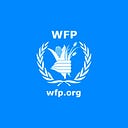WFP Strengthens Rural Communities With Savings & Loans
Giving rural communities simple ways to save and lend money encourages stability, empowers women and youth, reduces dependency and helps communities on a journey to self-reliance
Story by Alessandro Abbonizio
It’s nine o’clock in the morning and several savings groups are already sat each around a locked metal box discussing financial matters. Punctuality is important as fines can be imposed on absentees or for those who arrive late.
A prayer starts off the session before each box is unlocked and its contents displayed for all to inspect. Two rubber stamps, an ink pad, pens, plastic containers, a calculator, tokens and bags containing money are all placed in front of each box. Each person is then issued with a small white passbook with the words ‘Shares’ typed at the front and ‘Loans’ towards the back.
For rural communities of Isiolo County in northern Kenya, access to credit from financial organizations is minimal. Farmers are often deemed too high risk for financial inclusion because they are largely dependent on rain-fed agriculture for their livelihoods, and faced with the increasing effects of climate change, irregular incomes and low levels of financial literacy.
So in response to demands for access to credit and because financial inclusion will help build resilience and drive economic empowerment, the World Food Programme (WFP) in partnership with Isiolo County government has trained 20 village agents.
The agents promote establishing group savings schemes to facilitate access to loans and credit in order to invest in productive livelihood activities.
Each Village Savings and Loan Association (VSLA), consists of 12 to 25 members, who meet individually once a week and collectively once a month with the primary goal of providing a simple savings and loan facility.
HOW THE GROUPS WORK
The basic principle of the Village Savings and Loan system is that members of a self-selected group voluntarily form an association and save money through purchasing shares. The savings are invested in a loan fund from which members borrow. Loan repayments include a service charge and a pre-determined interest rate, which is recorded in every members’ passbook.
Each member can either contribute a minimum of one share, equivalent to 100 Kenya Shillings (US$1), or a maximum of 5 shares (equivalent to 500 shillings (US$5) per week. The share value is set at a level that allows the poorest members to purchase at least one at each association meeting.
The amount that anyone can borrow is three times the value of their shares.
All transactions take place in front of all members to ensure transparency and accountability. Contributions are deposited in a metal box secured with multiple locks. An elected ‘box-keeper’ stores the box at home. The keys are kept by other members to avoid any tampering outside regular meetings.
“Life was hard before VSLAs as there was no help for people who had problems,” says Rosemary Epurukel, Chairperson of Echama VSLA.
“We started our VLSA to help one another as a group and we saw that if we stay together, we can help our children in their studies and also to uplift ourselves. Those who are struggling, we help them, and those who are unable to pay school fees, we help their children to study,’ she says.
At the end of each ‘cycle,’ usually a year, the accumulated savings, fines and service charge earnings are shared out among the membership in proportion to the amount that each member has managed to save during the cycle.
“Our initial plan was to help communities establish and manage 60 VSLAs in the first year,” says Charles Songok, Head of WFP’s Isiolo Field Office.
“We have 71 groups and from the positive feedback and growing demand from communities, we envisage that by June 2022 we should have scaled up to over 300 VSLAs and linked over 100 of them to financial institutions in Isiolo County,” he says.
THE BENEFITS OF COLLECTIVE SAVING
For communities largely excluded from mainstream banking joining a VSLA encourages members to save when they might otherwise have spent. Similarly, by using the savings as a source of loans, the savings increase in value through service charges, interest and fines compared to leaving the money at home where it earns nothing and may even be lost or stolen.
“I saw there were many benefits to joining a VSLA,” says Samuel Mang’ethe, Chairman of the Serian VSLA,
“It is difficult to find work where we live and I saw that if you join a VSLA you can get some money to help you through day-to-day life. I have taken a 5,000 shilling (US$50) loan from the VSLA that I used to buy and sell goats which has really helped me support my family,” he says.
SAVINGS AND LOANS ARE JUST THE START
The VSLAs in Isiolo County provide rural communities with a short-term solution to accessing financial services to generate sustainable incomes. Full financial inclusion is a very real possibility for groups who set medium and long-term goals and can mature through linkages with financial institutions.
VSLAs are a natural entry point for economic empowerment and community resilience. Through savings and loans, communities access credit for income generation from work other than farming. This provides a vital safety net in case of emergencies.
VSLAs can also be used to influence Social Behaviour Change and to establish a sustainable food system through key health and nutrition messaging, financial literacy skills and the economic empowerment of women and youth.
So with vital donor support to give rural farming communities some simple ways to save and lend money, WFP is encouraging stability, addressing dependency and helping communities on their journey towards self-reliance.
Donors supporting the promotion of savings and loans groups in Isiolo are the United States Agency for International Development, Germany’s Federal Ministry of Economic Cooperation and Development, the Swedish International Development Cooperation Agency and Global Affairs Canada.
Click here to learn more about WFP in Kenya
